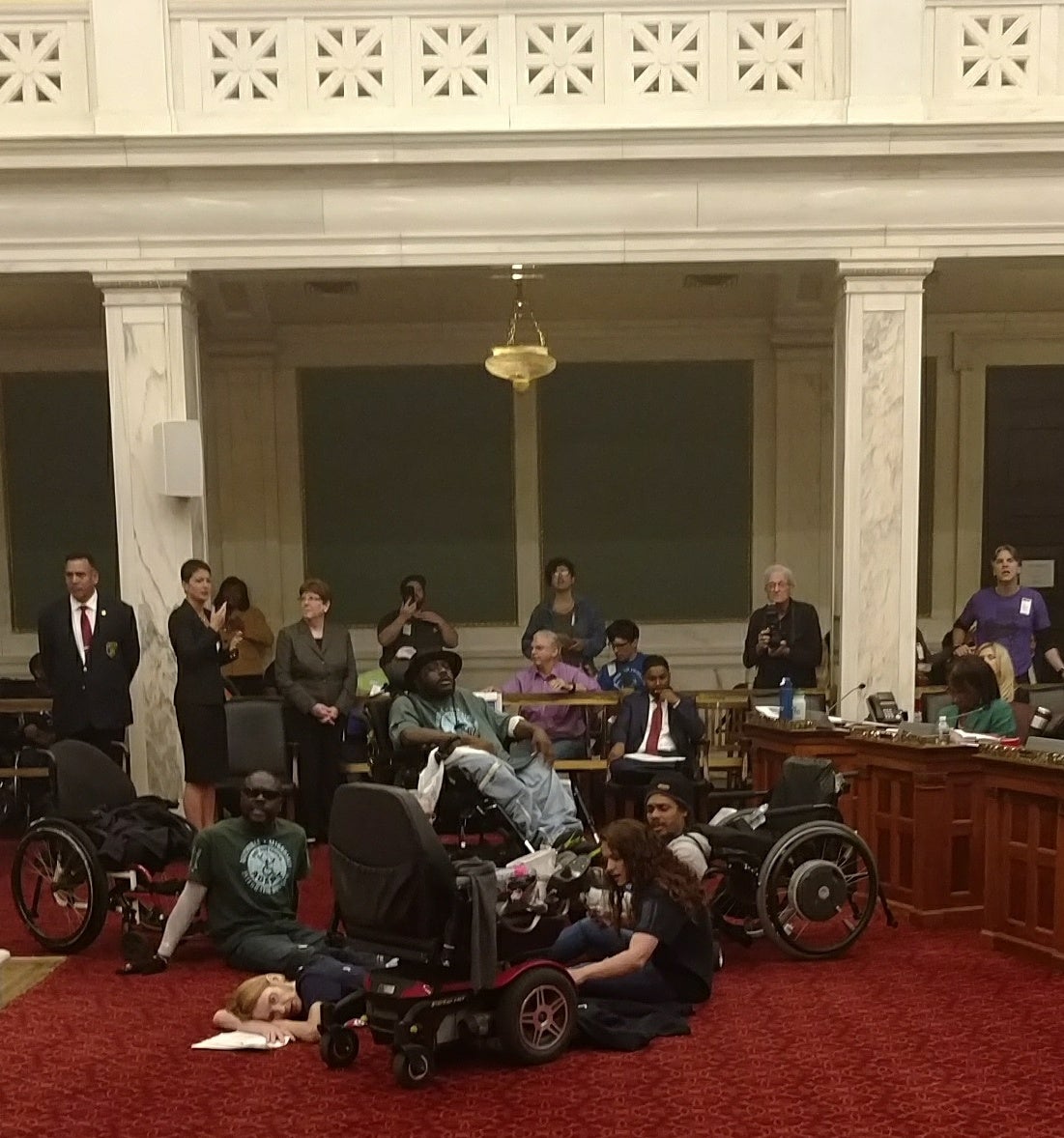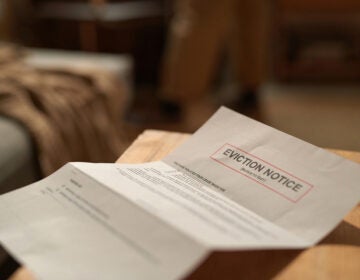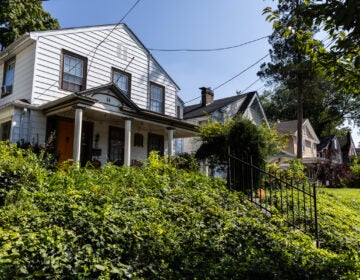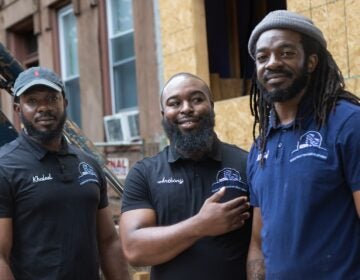Activists’ protest delays, but doesn’t derail, affordable-housing bills

City Council President Darrell Clarke’s affordable-housing package moved forward Thursday, despite activists who occupied the council chamber for 30 minutes to protest provisions of the bills that they argue would deprive Philadelphia’s poorest residents of new subsidies.
About dozen protesters stormed the council floor, while supporters in the audience shot to their feet and began clapping. A handful got out of their wheelchairs and lay down on the floor, chanting, “Stop Clarke, stop greed, money for housing is what we need!”
“[The] City Council president got our message that creating a fund twice the size of the Housing Trust Fund and not giving anything to people [in poverty] is an outrage,” said Nancy Salandra, a member of the activist group Disabled in Action who also serves on the steering committee of the Philadelphia Coalition for Affordable communities.” A middle-class family… making $105,000 [does not] need assistance. Money is going to the middle class [who were not] at the hearing yesterday fighting for something they don’t need.”
The Philadelphia Coalition for Affordable Housing is an umbrella group of organizations that have been pushing for a tax on new construction for years. But they hoped that the revenue raised would be entirely directed into the Housing Trust Fund, which currently gets only a little over $11 million a year. Half the revenue in the trust fund must be spent on housing for those who make less than 30 percent of the area median income (or $26,000 for a family of four).
The activists want that formula preserved for the revenue raised by the proposed construction tax, and so they have expressed concerns about provisions of the legislative package that would establish a new sub-fund that could be spent on housing for those who earn up to 120 percent of median income, or over $100,000 for a family of four. Calling it “the Gentrification Amendment,” they also have denounced the fact that for-profit developers would be able to access revenues from the construction tax to build affordable housing, and that affordable-housing developments funded by the Low Income Housing Tax Credit (LIHTC) would be subject to the tax.
Clarke confessed he was “perplexed” by the protests, noting that construction-tax supporters could have used that kind of fiery backing at Wednesday’s committee hearing, at which the Kenney administration and the city’s building trades unions heavily criticized the idea.
“I’m sure there will be a number of alterations, and we are prepared to continue to listen, but at the end of the day we need to move forward because people need housing,” Clarke said, “and not just traditional affordable housing, but people need support to buy homes, down payments, closing costs. People need jobs, and this is going to produce a lot of jobs. This is a broad-based, comprehensive approach for an equitable Philadelphia.”
The legislation may be amended again, Clarke said, noting that he was not committed to getting it passed in its current form next week. But he said that a version of the tax will be passed before the summer recess, which begins after the last council meeting on June 21.
The higher area-median-income target is seen as necessary to guarantee the votes of council members who do not represent city neighborhoods plagued by extreme poverty but that have nonetheless been struggling since the Great Recession and have not been part of the recent wave of reinvestment in the city.
Councilwoman Cherelle Parker is a champion of these “middle neighborhoods” and is seen as one of the swing votes that needs to be kept in the pro-construction-tax column to guarantee a veto-proof majority.
Councilwoman Maria Quiñones-Sanchez, who kick-started the council’s recent focus on affordable-housing legislation, said many different forms of housing assistance are needed across the city’s neighborhoods.
“They have a right to ask for more of a percentage of the money, and I will debate that once we have it,” said Quiñones-Sanchez. “But ultimately we have to make a decision for the entire city. We should not put one group of Philadelphians against another group of Philadelphians. This is a balanced, equitable strategy about homeownership and housing preservation.”
The group Disabled in Action and the HIV/AIDs activists of ACT UP led Thursday’s protests, as they told PlanPhilly they would if amendments were not adopted to guarantee funding for housing for the lowest-income Philadelphians. They resisted police efforts to remove them and shut down business on the council floor for more than a half-hour.
“When poor people are under attack, what do we do?” activists chanted from the gallery. “Act up, fight back!”
Nevertheless, after the protesters were removed from the chambers, both the legislation creating the construction tax and the sub-fund received their first readings before the council. That cleared the way for a second reading and final passage as early as next week.
Quiñones-Sanchez also introduced amendments to her inclusionary zoning bill, which PlanPhilly first outlined in April. The new bill will expand the city’s existing inclusionary zoning bonus, which currently applies only to the highest-density corners of the city. Quiñones-Sanchez’s amendments approved Thursday will give developers in many of the city’s multifamily districts a height bonus of seven feet and 25 percent more housing units than they are currently allowed if they pay into the Housing Trust Fund or provide more affordable units on site.
Two types of bonuses would be created, a narrower variety for those building moderate-income units — affordable to those at 60 percent of area median income for rental units and 80 percent for ownership units — and more generous bonuses for low-income rental units, defined as 50 percent AMI for rentals and 70 percent for ownership units.
The payments into the trust fund will be calculated by multiplying the cost of construction by 1 percent for those seeking a moderate-income bonus and by 2 percent for those seeking a low-income bonus. But Quiñones-Sanchez said that those numbers are not set in stone, and that ways are being explored to make the bonuses for deeper affordability even more enticing.
The bill would give developers a height bonus of up to seven feet, capped at 45 feet, and 25 percent more housing units would be permitted when building in the low-rise, multifamily zoning designation that still covers some rowhouse neighborhoods (RM-1). That would also apply in neighborhood commercial districts zoned CMX-1, CMX-2, and CMX 2.5.
Most of the other multifamily and mixed-use zoning districts would get floor-to-area (FAR) ratio bonuses of varying sizes.
WHYY is your source for fact-based, in-depth journalism and information. As a nonprofit organization, we rely on financial support from readers like you. Please give today.







